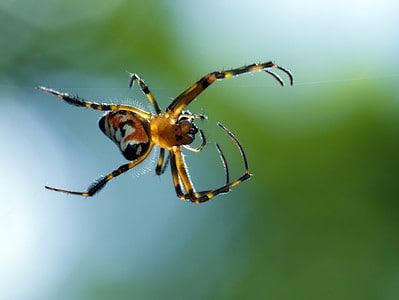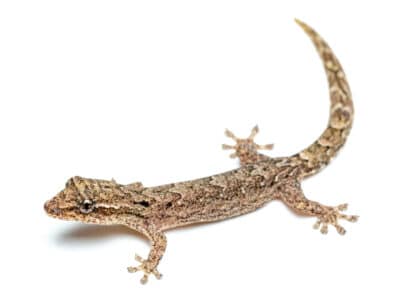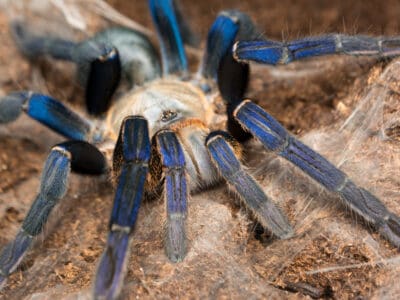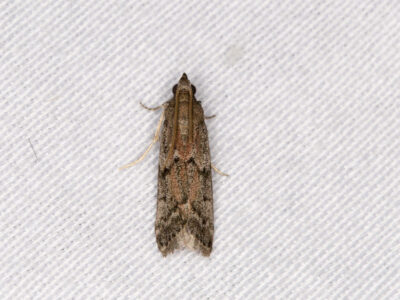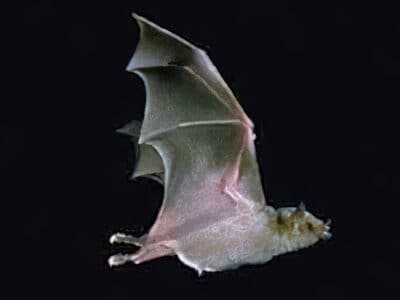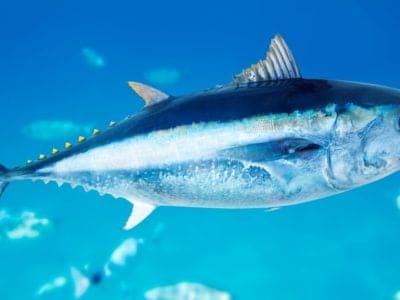Dusky Shark
Carcharhinus obscurus
The Dusky Shark sometimes eats trash discarded by humans.
Advertisement
Dusky Shark Scientific Classification
- Kingdom
- Animalia
- Phylum
- Chordata
- Class
- Chondrichthyes
- Order
- Carcharhiniformes
- Family
- Carcharhinidae
- Genus
- Carcharhinus
- Scientific Name
- Carcharhinus obscurus
Read our Complete Guide to Classification of Animals.
Dusky Shark Conservation Status
Dusky Shark Facts
- Prey
- Cephalopods, Bony fish, Stingrays, Small sharks, Sea turtles, Crustaceans, Carrion, Tuna, Mackerel, Herring
- Name Of Young
- Pups
- Group Behavior
- Solitary
- Group
- Mainly solitary
- Solitary/Group
- Fun Fact
- The Dusky Shark sometimes eats trash discarded by humans.
- Biggest Threat
- Shark fin trade and overfishing
- Most Distinctive Feature
- Rounded snout
- Other Name(s)
- Brown shark, Bronze whaler shark, Common Whaler shark, Shovelnose shark, Bay Shark, River Whaler
- Gestation Period
- 18 to 22 months
- Litter Size
- 3 to 16 pups
- Habitat
- Tropical and temperate waters and occur globally in temperatures between 66 to 82°F
- Predators
- Ragged-tooth shark, Great white shark, Bull shark, Tiger shark
- Diet
- Carnivore
- Average Litter Size
- 3 to 16 pups
- Lifestyle
- Solitary
- Group
- Favorite Food
- Tuna, Herring, Mackerel
- Common Name
- Dusky shark
- Location
- Algeria, Australia, Bahamas, Belize, Brazil, Cabo Verde, China, Colombia, Costa Rica, Cuba, El Salvador, Eritrea, French Guiana, Guatemala, Guyana, Haiti, Honduras, Italy, Japan, Libya, Madagascar, Mexico, Mozambique, New Caledonia, New Zealand, Nicaragua, Panama, Senegal, South Africa, Canary Islands, Spain, Sudan, Suriname, United States, Uruguay, Venezuela, Viet Nam, Western Sahara, Yemen
- Migratory
- 1
View all of the Dusky Shark images!
The dusky shark is one of the largest in the shark species and has a long streamlined body. Their backs are brownish-gray, and they have a pale white underbelly.
Dusky sharks are in high demand in the shark fin trade. Unfortunately, their fins are large and valuable, making them victims of human capture, especially in China. In addition, people use their flesh to make leather and for liver oil used in vitamins.
Dusky sharks partake in massive migrations; however, the females won’t join if they are about to give birth. Instead, they will venture back to the area where they were born.
Dusky Shark Facts
- Their massive size makes them dangerous to humans
- They are solitary
- Female dusky sharks sometimes store sperm because they don’t come across potential mates often
- They are slow growers and only reach adulthood at 20 years old
- Dusky sharks can reach 50 years of age
- They eat a lot! In one sitting they can eat up to a tenth of their total weight, and they sometimes eat trash discarded by humans.
- According to the International Shark Attack File, dusky sharks have attacked people and boats a total of six times. Three were unprovoked attacks and one of the attacks was fatal.
Dusky Shark Classification and Scientific Name
The dusky shark’s scientific name is Carcharhinus obscurus, which belongs to the family Carcharhinidae and the class Chondrichthyes.
This shark species has many names, which include:
- Brown shark
- Bronze whaler shark
- Common Whaler shark
- Shovelnose shark
- Bay Shark
- River Whaler
In 1818, French naturalist, Charles Alexandre Lesueur, first documented the dusky shark in the Journal of the Academy of Natural Sciences of Philadelphia.
At first, he placed it in the genus Squalus, but its genus changed to Carcharhinis later. The specific epithet (the second part of their scientific name) is obsucrus, which means ‘dim’ or ‘dark’ because of their coloration.
Subspecies
The dusky shark has several subspecies, which include:
Bull Shark
The bull shark has an incredibly powerful bite that ranks among the highest of any fish. It has bite with the force of 5,914 Newtons, more powerful than the great white shark and the great hammerhead!
Bull sharks differ from other sharks because they can thrive in both saltwater and freshwater. For example, 1,750 miles up river from New Orleans, two fishermen caught a bull shark while on a fishing trip near Alton, Illinois.
The females are viviparous, so they don’t lay eggs. Instead, the eggs hatch inside the uterus, and the mother gives birth to live pups. Bull sharks have a gestation period of 11 months, and their litters usually consist of one to 13 pups.
Nervous Shark
The nervous shark is found in tropical waters around:
- Northern Australia
- Shark Bay
- Moreton Bay
- Soloman Islands
- Papua New Guinea
They have a bulky build and a short, rounded snout. The nervous shark’s coloring varies from gray, bronze, and brown, with white underbellies.
Lifespans differ from males to females, with the males reaching a maximum of 12 years and the females 16 years.
Speartooth Shark
The speartooth shark is gray in color with a white underbelly. Its eyes have white rings around them, and it has black blotches on its pectoral fins.
Their small black eyes sit on a broad head with a flattened snout, and they have a streamlined, robust build with an asymmetrical tail.
The speartooth shark likes to feed on:
Speartooth sharks are active during the day and night because of the murky water they inhabit, making them unable to easily determine the time of day.
The speartooth shark lives by the motto, swim smart, not hard, because they use tidal currents to move in the water.
When relying on currents, speartooth sharks can travel 6.2 to 7.5 miles both up and downstream. By doing this, they preserve their energy for hunting. But, if they need to, speartooth sharks use their large dorsal fin to maneuver in fast currents.
Grey Reef Shark
The grey reef shark grows 5 to 6.6 feet long and weighs 44 to 66 pounds. They are gray in color; however, those that inhabit shallow water become darker due to the sun. They have large eyes and a round snout and sport an elongated body.
They prefer tropical waters and occur in the:
- Pacific Ocean
- Indian Ocean
- The Caribbean Sea
The grey reef shark prefers to swim slowly most of the time but can reach speeds of 25 miles per hour when hunting.
They are social animals during the day and gather in groups of ten to twenty sharks; however, they prefer being solitary and hunting on their own after dark.
Grey reef sharks are a threat to humans and have attacked people. The majority of these attacks happened during their feeding time when they were very excited.
Blacktip Reef Sharks
Blacktip reef sharks prefer shallow waters where they can swim underneath the surface with their dorsal fins peeking through the water.
They are a very shy species and avoid other predators when they are on their own. So, instead, they prefer to form larger groups for protection.
Therefore, blacktip reef sharks are classified as social fish and are generally found in large groups with a strong hierarchy. However, they are inquisitive and often interact with divers.
They are predominantly found in tropical Indo-pacific areas, which include:
- China
- The Philippines
- Thailand
- Malaysia
- Indonesia
- New Caledonia
- Papua New Guinea
- Northern Australia
- Japan
When the adults are fully grown, they can measure up to a whopping 6 feet, and their maximum recorded weight is 30 pounds.
Galapagos Shark
Explorers named the Galapagos shark after the location where they were first discovered, the Galapagos Islands. There are cruises to popular snorkeling sites around the islands where tourists can view them in their natural habitat.
Their most significant populations occur around Darwin and Wolf Island, but these are not the only locations they frequent. They occur worldwide in tropical and semitropical areas.
Their prey of choice is usually bottom-dwelling creatures like:
- Flatfish
- Triggerfish
- Eel
- Flying fish
- Squid
- Octopus
They are hard to tell apart from other large requiem sharks because many of their characteristics are identical. Galapagos sharks are darkish-grey in color and have an off-white underbelly. The edges of their tales are black, and they have a ridge running between the dorsal fins. Galapagos sharks grow between 9.8 to 12.1 feet in length.
They are victims of overfishing, and their populations are declining, and the IUCN lists them as near threatened.
Dusky Shark Appearance
Dusky sharks have slender builds and long sickle-shaped pectoral fins. However, their most distinctive feature is their round snouts. Individuals can also identify them by the interdorsal ridges on their backs.
They vary from a blue-gray to a dark-gray color on the dorsal side and they have white underbellies. Their sharp teeth are triangular and saw-edged. They rule their kingdoms as an apex predator because they are so big and can weigh up to 400 pounds.
When dusky sharks reach adulthood, they generally measure 10 feet long; however, the maximum length ever recorded was 14 feet.
Dusky Shark Behavior
These sharks are predominantly solitary but seasonally migrate in groups, often covering thousands of miles per event.
The dusky sharks that inhabit the Atlantic and eastern Pacific move north during the warmer months and south in the winter.
They are potentially dangerous to humans because of their large size and the shallow coastal waters they inhabit, and recorded attacks on humans have occurred.
In Australia and South Africa, dusky sharks often get caught in shark nets which has caused a steep decline in their population numbers.
Dusky Shark Habitat
Dusky sharks prefer tropical and temperate waters and occur globally in temperatures between 66 to 82°F. Though they prefer shallow water, they do venture off the coast to the outer continental shelf all the way to the adjacent pelagic waters at depths of 1,300 feet.
They are widely distributed in the Canary Islands through the western and central Mediterranean Sea. Dusky sharks also occur in:
- Senegal
- Sierra Leone
- Spain
- Portugal
- Madeira
- Morroco
In addition, people have seen them on the Bay of Bengal, the Arabian Sea, Vietnam, China, Taiwan, Japan, and Australia.
Dusky Shark Diet
The Dusky shark is spoiled for choice and has a wide variety in its diet. Their preferred prey includes:
- Cephalopods
- Bony fish like bluefish
- Stingrays
- Small sharks
- Sea turtles
- Crustaceans
- Carrion
However, their all-time favorite meals are pelagic fish like:
Dusky sharks are also known to eat human garbage.
Dusky Shark Predators and Threats
Because of their size, adult dusky sharks don’t have any natural predators. However, their pups are vulnerable to larger sharks like the:
- Ragged-tooth shark
- Great white shark
- Bull shark
- Tiger shark
Off the coast of South Africa, along the shorelines of KwaZulu-Natal, they use shark nets to protect the people swimming in the bay. These nets have reduced the population size of adult dusky sharks. This gave way for the juvenile population to flourish, and as a result, they have decimated bony fish populations, causing a negative impact on the local ecosystem and biodiversity.
Another threat facing the dusky shark is capture for the shark fin trade. Their valuable fins make them highly in–demand, especially in China, where they use their fins in soup and meat in traditional medicine.
In addition, people use their flesh to make leather and liver oil used in vitamins. Unfortunately, in the past recreational anglers caught them in shark-fishing tournaments, but luckily, that has stopped.
Due to the shark fin trade and overfishing, their numbers declined leaving IUCN with no choice but to list them as endangered.
Dusky Shark Reproduction, Babies, and Lifespan
Dusky sharks are viviparous, meaning they birth live young. However, the eggs are fertilized in the uterus and feed off a yolk inside the egg for nourishment.
After a gestation period of eighteen to 22 months, the females give birth to a litter between 3 to 16 pups every two to three years. When they are ready to give birth, the females swim to shallow water just off the coastline. Pups measure around 33 to 39 inches at birth.
Dusky sharks have a slow growth rate, and it takes males between 16 to 20 years to reach maturity, depending on location. The females have to wait 16 to 22 years before they are fully mature.
Dusky Shark Population
The dusky shark population often remains stagnant because of its prolonged growth rate, age of maturity, and small litter sizes. This makes them vulnerable to population decreases.
In the Northwest and Western Central Atlantic, dusky sharks have declined significantly. A recent study revealed that their current population size only represents 15 to 20% of their abundant numbers in the 1970s.
Dusky Sharks in Fishing and Cooking
Dusky sharks are one of the most desired shark species for their fins used in shark-fin soup and liver oil. In addition, its skin is used to make leather. As a result, they are vulnerable to commercial and recreational fishing, but they are often victims of overfishing as a bycatch.
Because their numbers are declining off the coasts of the USA, commercial fishing of the species is forbidden. However, sportfishing is still allowed.
Dusky Shark In the Aquarium
Dusky sharks do not do well in captivity due to their large size. However, there are two aquariums that house them:
- Okinawa Churaumi Aquarium, Japan
- SeaWorld Marine Park Gold Coast, Australia
Related Animals
- Caribbean reef shark – This shark has a rounded snout, large eyes, and is dark grey or brown-grey above with a white underbelly.
- Sandbar shark – With a rounded snout and a dark grey or brownish body and white underbelly, this shark is similar in appearance to the dusky shark.
- Silky shark – This shark has a rounded snout, large eyes, with blue-grey above and white underbellies.
Dusky Shark FAQs (Frequently Asked Questions)
Are dusky sharks aggressive?
Dusky sharks are not typically aggressive, except when provoked.
Do dusky sharks eat humans?
There are six known dusky shark attacks on humans and boats. Three were unprovoked, and one was fatal.
Are dusky sharks rare?
Due to the shark fin trade and overfishing, their numbers declined, leaving IUCN with no choice but to list them as Endangered.
Where are dusky sharks found?
Dusky sharks prefer tropical and temperate waters and occur globally in temperatures between 66 to 82°F.
Why is the dusky shark endangered?
Yes, due to overfishing, the shark fin trade, and their slow growth rate, dusky sharks are listed as endangered.
Thank you for reading! Have some feedback for us? Contact the AZ Animals editorial team.
Sources
- Florida Museum, Available here: https://www.floridamuseum.ufl.edu/discover-fish/species-profiles/carcharhinus-obscurus/
- Marine Bio, Available here: https://www.marinebio.org/species/dusky-sharks/carcharhinus-obscurus/
- Wikipedia, Available here: https://en.wikipedia.org/wiki/Dusky_shark#Biology_and_ecology
- KwaZulu-Natal Sharks Board, Available here: https://shark.co.za/Pages/SharkDusky
- Ocean Conservancy, Available here: https://oceanconservancy.org/wildlife-factsheet/dusky-shark/
- Guidesly, Available here: https://guidesly.com/fishing/fish-species/dusky-shark
- IUCN Red List, Available here: https://www.iucnredlist.org/species/3852/2872747#
- Shark Water Extinction, Available here: https://www.sharkwater.com/shark-database/sharks/nervous-shark/
- Tree Hugger, Available here: https://www.treehugger.com/bull-shark-facts-5073755
- Facts, Available here: https://facts.net/speartooth-shark-facts/
- Soft School, Available here: https://www.softschools.com/facts/animals/speartooth_shark_facts/1162/
- Underwater 360, Available here: https://www.uw360.asia/8-fact-about-the-galapagos-shark/








